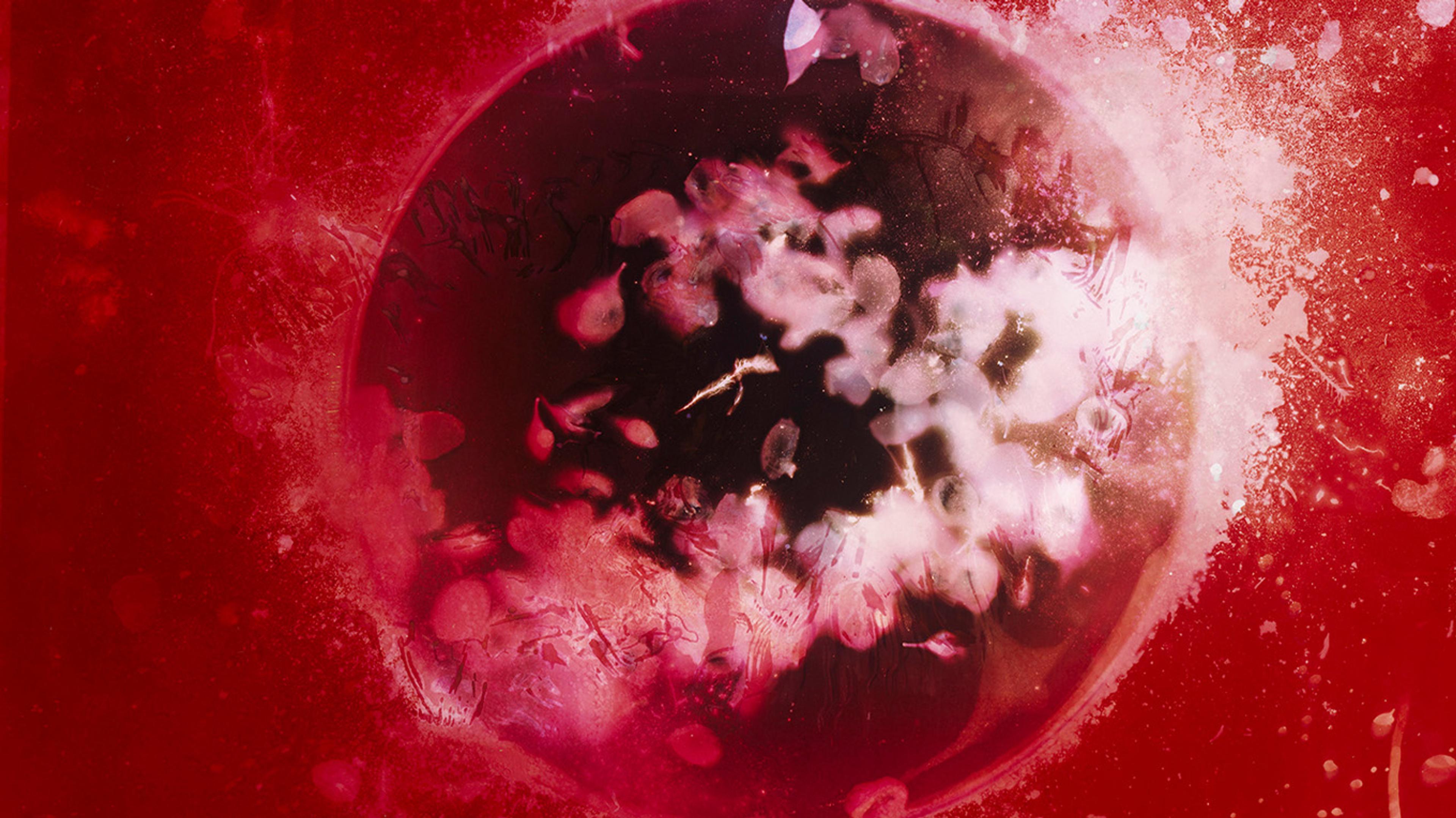Ewa Stackelberg
Fotogram

Ewa Stackelberg’s personal universe emerges in the darkroom. Employing light, chemicals and objects, but no camera, she creates images imprinted by real life experiences. The exhibition is a restrained yet colourful encounter between stage designer Ulla Cassius’ distinct spaces and Ewa Stackelberg’s photograms. Together they have created a meditative total experience that is open for your own interpretations.
The pictures emerge in dialogue with chance
In 2001 Ewa Stackelberg was awarded the prize for the best photo book of the year. It was also the year’s most poignant photo book, comprising images and texts in which she processed the loss of her beloved husband who was killed in a plane crash in 1997. In a diary of naked self-disclosure, she recounted her story with images from the darkroom.
“When the accident occurred, I was flung into darkness and my way of getting out of it was to work. In the midst of this horrific experience an artistic freedom opened up,” Ewa says in a film by Maud Nycander which is part of the exhibition and deals with her work with her photograms. Her pictorial language changed, but it always expressed the condition she found herself in. A condition where both death and life were present.
Ewa Stackelberg has continued to work with photograms, images that emerge in the darkroom by placing various objects on a light-sensitive material which is then exposed to light. The pictures emerge in dialogue with chance, depending on how the chemicals and sometimes an object react to light. It is an old technique used by photographic pioneers such as Anna Atkins who in 1843 created photographic illustrations with the help of Cyanotyp, a method that gave detailed photograms in a range of blue colours. Later, artists such as August Strindberg, Man Ray and László Moholy-Nagy used the technique. It is photography in its original form, a counterpoint to the digital evolution.
For Ewa Stackelberg, creating images directly in the darkroom harks back to her early art studies. In 1976, after the fall of the Franco regime, she moved to Spain to study painting but reality intervened. She wanted to make pictures, but at the same time be a part of real life. She knew she wanted to be a photographer.
Feeling her way forward in her art, she tests and rejects. “It is like a dialogue between the unconscious and the artistic material. Suddenly there is magic. Suddenly another world appears from something as concrete as soil, intestines, leaves, water and clay. I have always been curious about projects with an uncertain outcome and have experimented with photographic techniques.”
““It is as if our gaze is forced to ignore this knowledge and enter into the colouristic beauty which seems to be the origin of everything”, writes the author Marie Lundquist in Ewa Stackelberg’s new book “Photograms”... ”
About Ewa Stackelberg
Since 1980 Ewa Stackelberg has worked as a freelance photographer employing an artistic and documentary approach. She has held numerous exhibitions and developed public artworks for, among others, Karolinska University Hospital, Huddinge and the New Karolinska Solna Hospital.
Educated at, among others, Gerlesborgsskolan, Escuela Massana in Barcelona and the Royal Institute of Art in Stockholm, Ewa Stackelberg is represented in the collections of the Public Art Agency Sweden, Stockholm County Council, the Länsförsäkringar Alliance and the Swedish Association for Art.
She has published several photo books, including “Tale for the Living” (published by Journal) which won the 2001 Best Photo Book of the Year award and the new book “Photograms” (published by ETC), which is released in conjunction with the exhibition at Fotografiska. For many years she has also held workshops and taught photography at the University College of Arts, Crafts and Design, Stockholm, Gamleby Fotoskola and Nordens Fotoskola.